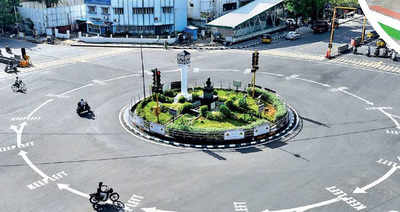The Hindu 20.07.2011
Nearly half the population of State lives in urban areas: provisional data
Urbanisation was the most significant between 1991 and 2001
Nearly half the population of Tamil Nadu live in urban
areas, as the State continues to maintain its status as one of the
country’s most urbanised ones. Provisional data released by the Census
Directorate based on the 2011 headcount shows the State’s urban
population stands at 48.45 per cent, whereas the figure was 44.04 per
cent in the 2001 census.
The figure represents a 10
per cent increase in the urban component of the population in the last
decade. The national average of urban residents is 31.16 per cent.
The
State’s population is 7,23,38,958, of which 3.71 crore people live in
rural areas (51.55 per cent) and 3.49 crore in urban areas.
There
has been only a 6.49 per cent growth in the rural population since
2001, whereas the urban population has gone up by 27.16 per cent,
indicating the high level of urbanisation going on in the State.
Urbanisation
in Tamil Nadu was the most significant in the decade between 1991 and
2001, when the urban population went up from 34.15 per cent to 44.04 per
cent.
Going by the latest census figures, Chennai,
naturally, is 100 per cent urban, but Kanyakumari has thrown up a
surprise by turning out to be the second most urbanised district, with
82.47 per cent of its people living in urban areas.
From
65.27 per cent in 2001, the southernmost district in the State has
significantly increased its urban population and has outdone the more
industrialised Coimbatore district, where the urban population has gone
up from 70 per cent to 75 per cent in the last decade.
Chennai’s
neighbouring districts – Kancheepuram and Tiruvallur – have urban
segments accounting for 63.59 per cent and 65.3 per cent respectively,
and new entrants to the highly urbanised districts (urban population of
more than 60 per cent) are Tirupur (61.48 per cent urban population) and
Madurai (60.64 per cent).
“Migration towards cities
and towns, where there are more economic and job opportunities, is the
main reason behind such large scale urbanisation,” says M.G.
Devasahayam, Managing Trustee of SUSTAIN, and a former urban
administrator. Besides the availability of opportunities for skilled,
semi-skilled and unskilled workers, the decline in agriculture also
contributes to the phenomenon.
“Both push and pull
factors are at work in Tamil Nadu, more than in any other State.
Agriculture is no longer attractive, and scarcity of water and lack of
remunerative prices are pushing people towards the cities, while the
prospect of more opportunities in information technology and IT-related
sectors and other services are pulling them,” he says.
However,
such large scale urbanisation also brings with it the need for
sustainable development and a comprehensive urban governance policy.
“Urban management or governance and a philosophy of urban development
are hardly given any attention,” laments Mr. Devasahayam. Much of the
State’s urban management policies revolve around catering to big
players, but there has been very little development in terms of basic
infrastructure for the low income population and the poor, he adds.
“It is time the State government seriously addressed this issue.”

